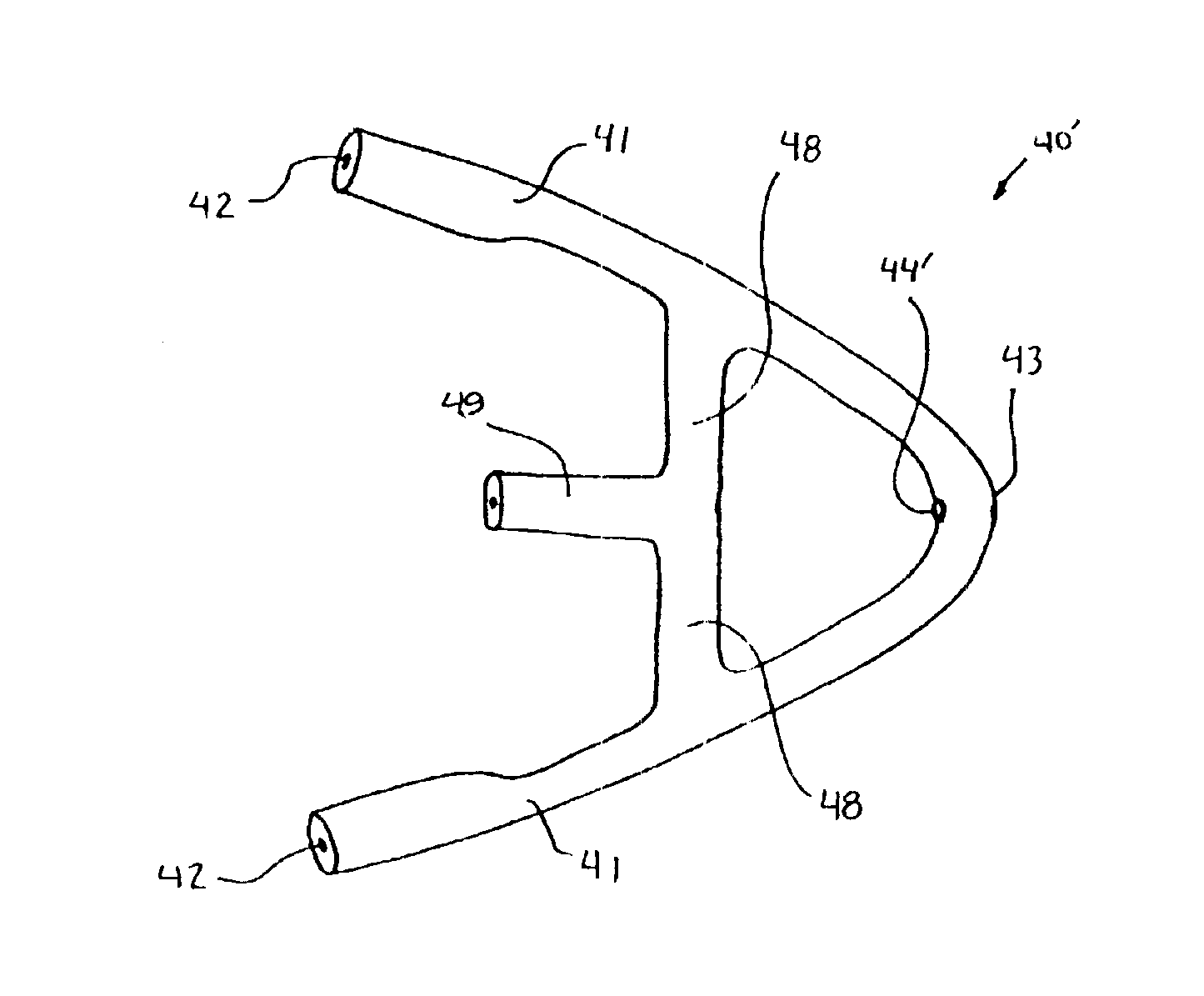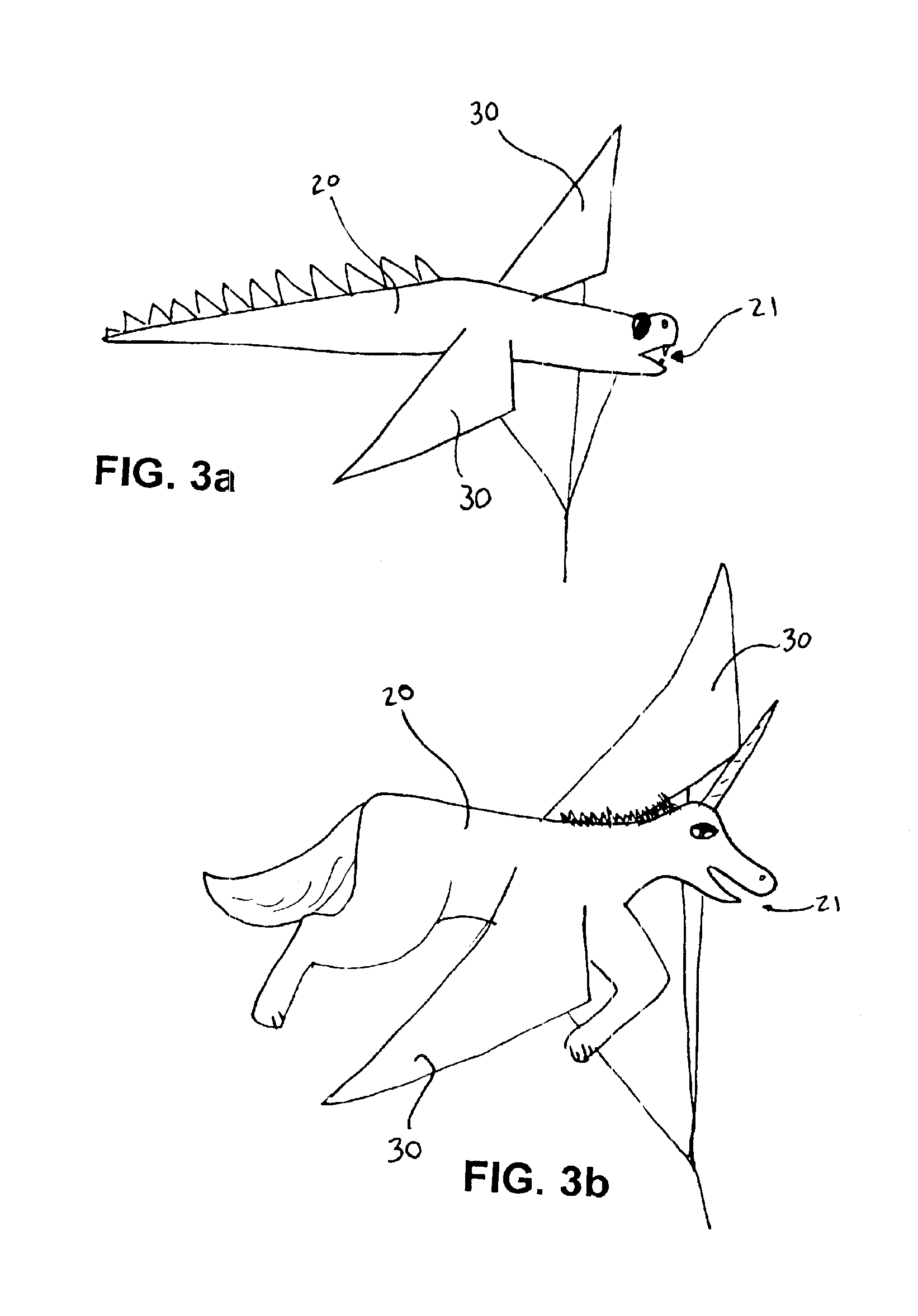Aircraft kite
a technology for aircraft and wings, applied in the field of aircraft kits, can solve the problems of affecting the shape of the wing, and the physical appearance so as to improve the stability and performance of the aircraft kite, reduce the fluttering of the wing, and effect the flight characteristics of the wing
- Summary
- Abstract
- Description
- Claims
- Application Information
AI Technical Summary
Benefits of technology
Problems solved by technology
Method used
Image
Examples
Embodiment Construction
)
The detailed description set forth below in connection with the appended drawings is intended as a description of presently-preferred embodiments of the invention and is not intended to represent the only forms in which the present invention may be constructed and / or utilized. References to an airplane form is meant as illustrative of a preferred embodiment and for convenience of example. Airplane as used herein has been specifically defined above.
For the sake of convenience and clarity, this disclosure makes references throughout to kites having “airplane” forms, and “airplane” is defined for the purposes of this application to mean any aircraft, real or fictional, man-made or natural. Where wings are unnecessary to explain the present invention, the definition includes any such aircraft, whether or not it has wings, such as dirigibles, spacecraft without wings, wingless animals, and the like. The following describes one preferred embodiment, namely an aircraft or airplane kite ha...
PUM
 Login to View More
Login to View More Abstract
Description
Claims
Application Information
 Login to View More
Login to View More - R&D
- Intellectual Property
- Life Sciences
- Materials
- Tech Scout
- Unparalleled Data Quality
- Higher Quality Content
- 60% Fewer Hallucinations
Browse by: Latest US Patents, China's latest patents, Technical Efficacy Thesaurus, Application Domain, Technology Topic, Popular Technical Reports.
© 2025 PatSnap. All rights reserved.Legal|Privacy policy|Modern Slavery Act Transparency Statement|Sitemap|About US| Contact US: help@patsnap.com



